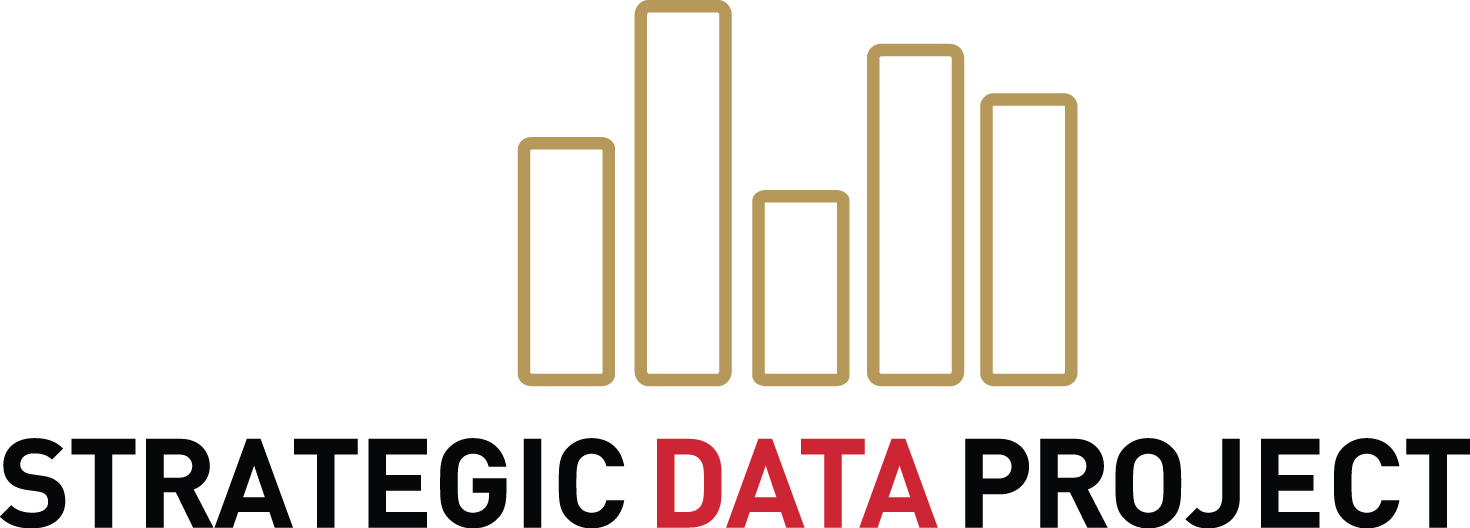
“A lot of times we work in silos as researchers: you are either in the policy world or working at an institution. I’ve done both—and I’m all for bridging those worlds. It’s critical that SDP Fellows are aware of the policy conversations that are happening, so they can understand how they and their work can engage with those conversations.” – Dr. Monique O. Ositelu
What is data outside of context? If numbers are points on a line, context is the line itself—the people, circumstances, and settings that connect the dots and form a narrative. By situating data within live contexts and lived experiences, researchers can understand what, why, and how. They can offer data-driven stories rather than dry statistics—a powerful tool to inform policy and decision-making.
That’s the message Dr. Monique O. Ositelu is bringing to SDP-CTE ECMCF Fellow alumni this year, in a series of workshops focused on data equity and storytelling.
“If you give me a statistic, it means nothing if I don’t know who is behind that number,” said Ositelu, the founder of data consultancy Itàn LLC. “Data storytelling allows you to humanize your data. You understand what’s behind the numbers, and you can inform student-centered interventions, student-centered programming, and initiatives that are focused on the entire student.”
A former senior policy analyst at New America, Ositelu has researched the race- and gender-based outcomes for short-term professional certificate programs at community colleges—a subject especially relevant to SDP-CTE ECMCF Fellows. She also has worked as an education legislative policy analyst for the Florida Legislature, researcher for the College Autism Network, and program director at Florida State University's Center for Academic Retention and Enhancement.
“The SDP Fellows have a unique position and can speak to policy,” she said. “My goal is to share my expertise and knowledge, especially in helping fellows understand how to evaluate policies by using data with an equity lens and make sure they are humanizing their data with student stories.”
DEI x 2
How can analysts employ a “DEI” lens when conducting research? The answer starts by defining “DEI”—twice.
First, there’s the widely recognized statement of values: Diversity, Equity, and Inclusion. In this understanding, diversity respects difference, equity ensures fairness, and inclusion supports belonging. In Ositelu’s workshop for SDP Fellows, those principles and practices are applied to a second understanding of DEI: Data, Evaluation, and Interpretation. Each of these aspects of analysis must uplift diversity, equity, and inclusion.
In equity-minded data collection and analysis, researchers actively include underrepresented populations in institutional data. They can phrase survey questions that are inclusive of individuals from diverse backgrounds. When evaluating and interpreting data, researchers can employ methodological techniques like weights or oversampling of underrepresented students to ensure broad assertions are applicable to all students.
When working with secondary data, oversampling may not be an option but there are still ways to uplift DEI in data analysis. For example, race categories are typically reported as Asian/Pacific Islander, Black, Latino, white, and Native American. In some institutions, there may be too few students in any one of these categories to independently report their results. Ositelu advised SDP Fellows to work around this by being creative in defining an institution’s students of color, by grouping together race or ethnic groups of minority students into a single category. This allows the experiences and perspectives of students of color to be highlighted.
“These are not just strategies on how to collect data and best practices for research, but also strategies on how to use what we have now to ensure we uplift all students’ voices, and especially underrepresented voices.”
Out of a “Box”
If the point of data analysis is to inform action, data itself cannot be the end goal.
“Data is nice, but in the end it’s stories that really cause action,” said Ositelu. “Stories really get to the emotional side of the brain and provide context to the numbers.”
She offered her own personal experience as an example.
“There are so many dynamics to my identity,” she said. “I could be put in a box by a statistic, but there’s so much more to me. I’ve been labeled a Black student, a student from a low-income family, the youngest of six. But that didn’t really tell my story because I’ve got grit. It’s important to not just focus on data points, but to take into consideration the entire student and make sure we’re fully understanding how to best support our students.”
Ositelu applied this thinking to another workshop for SDP Fellows about the federal gainful employment rule. As a standard of success, “gainful employment” was designed to capture whether graduates from post-secondary vocational programs earned enough money to justify the use of federal tax dollars to subsidize the cost. Institutions lost federal financial aid funding if the typical graduate had student-loan payments that were more than 20 percent of discretionary income or 8 percent of total earnings. The rule took aim at institutions with high rates of student-loan defaults—especially for-profit schools, which accounted for one-third of defaults but just 9 percent of total post-secondary enrollment. It also had broad implications for Black students, 90 percent of whom take out student loans.
The rule was ended under the Trump Administration and is being resurrected by the Biden-Harris Administration, to potentially take effect in 2024. The current proposal would consider two metrics to determine gainful employment: debt-to-earnings and whether completers of a career program earned at least the median salary of a high-school graduate. One analysis found that under these new rules, 45 percent of all career-education associate degrees and undergraduate certificates and diplomas would fall short. However, a detailed look at the data in context tells a more complicated story, which institution-based analysts are uniquely qualified to share.
Instilling Authority and Influence
Ositelu’s workshop highlights how societal trends in terms of gender- and race-based pay gaps likely contribute to the relatively lower earnings in the health sciences compared to the construction trades, for example. It also gave SDP Fellows the opportunity to wrestle with the questions that data raises. Does a lower return on investment in health sciences certificate programs reflect their quality? Or does it mirror the characteristics of the health sciences workforce, which is overwhelmingly women of color?
“A lot of times when policy is made, they use arbitrary thresholds and uniform and blanket statements,” Ositelu said. “It’s really important to see the promise of higher education in terms of family-sustaining wages. But it’s very difficult to understand a diverse student population, and this is where data strategists at an institution can be helpful.”
In her workshop, SDP Fellows applied the proposed rules to their organization’s data, assessed impacts, and shared possible strategies to contribute to the policy conversation. Coming together in a cohort to undertake this work is a critical knowledge-sharing opportunity for Fellows, who often work alone, Ositelu noted. If a proposed rule or metric is a tricky fit for one diverse-serving institution, it’s likely tricky for others, too. And sharing these challenges and insights with peers helps to build knowledge, instill confidence, and gain new strategies to tell empathic, actionable data stories.
“It has challenged them to say, ‘We’re in the field—we are the practitioners. We have the expertise, possibly more than the policymakers. How can we build on what we see in the data at our college to inform what’s happening at the state and federal policy levels?’ ”
Dr. Monique O. Ositelu is the founder of Itàn LLC, a data consulting firm. Follow her on Twitter @moniqueositelu
